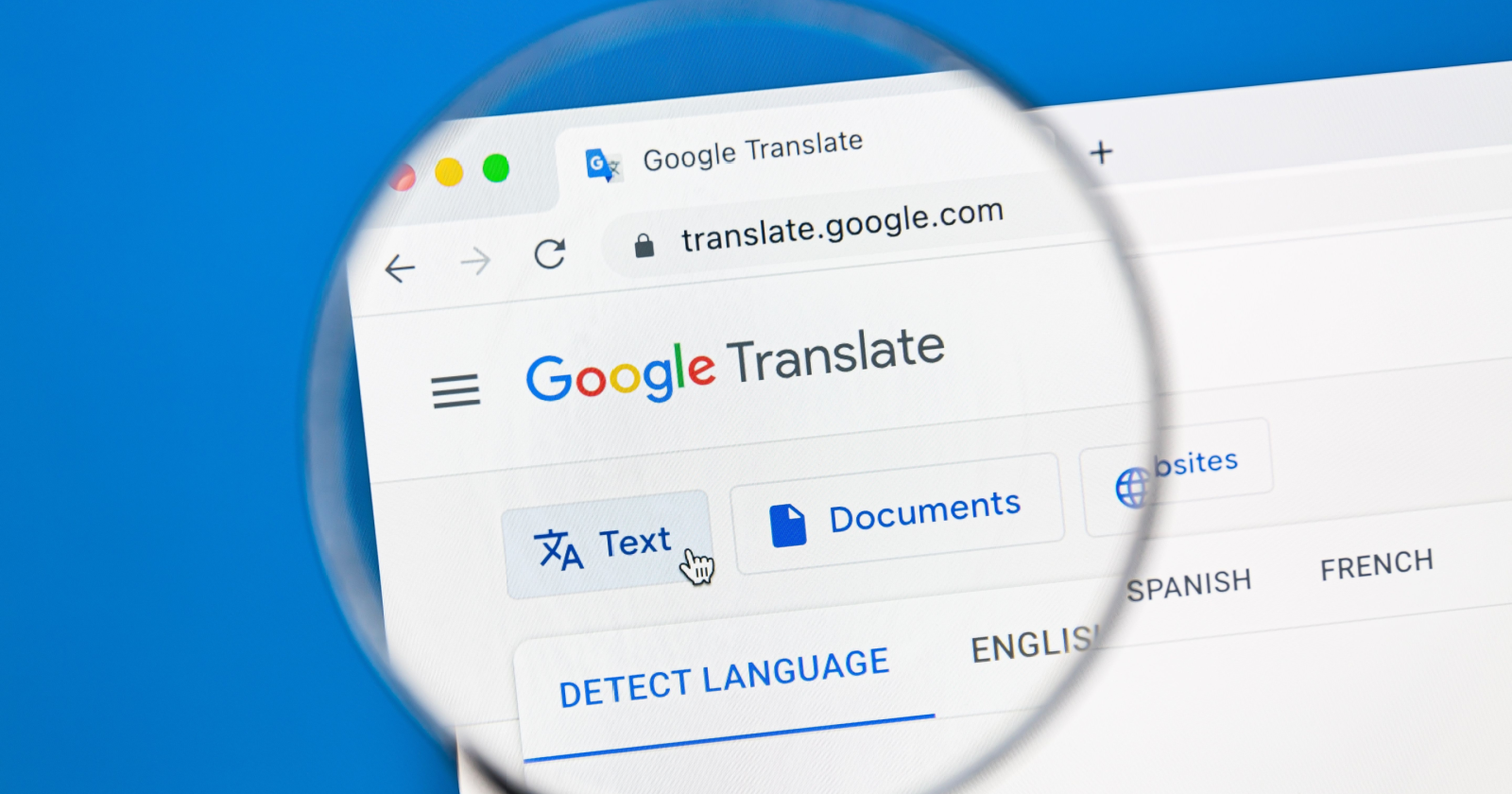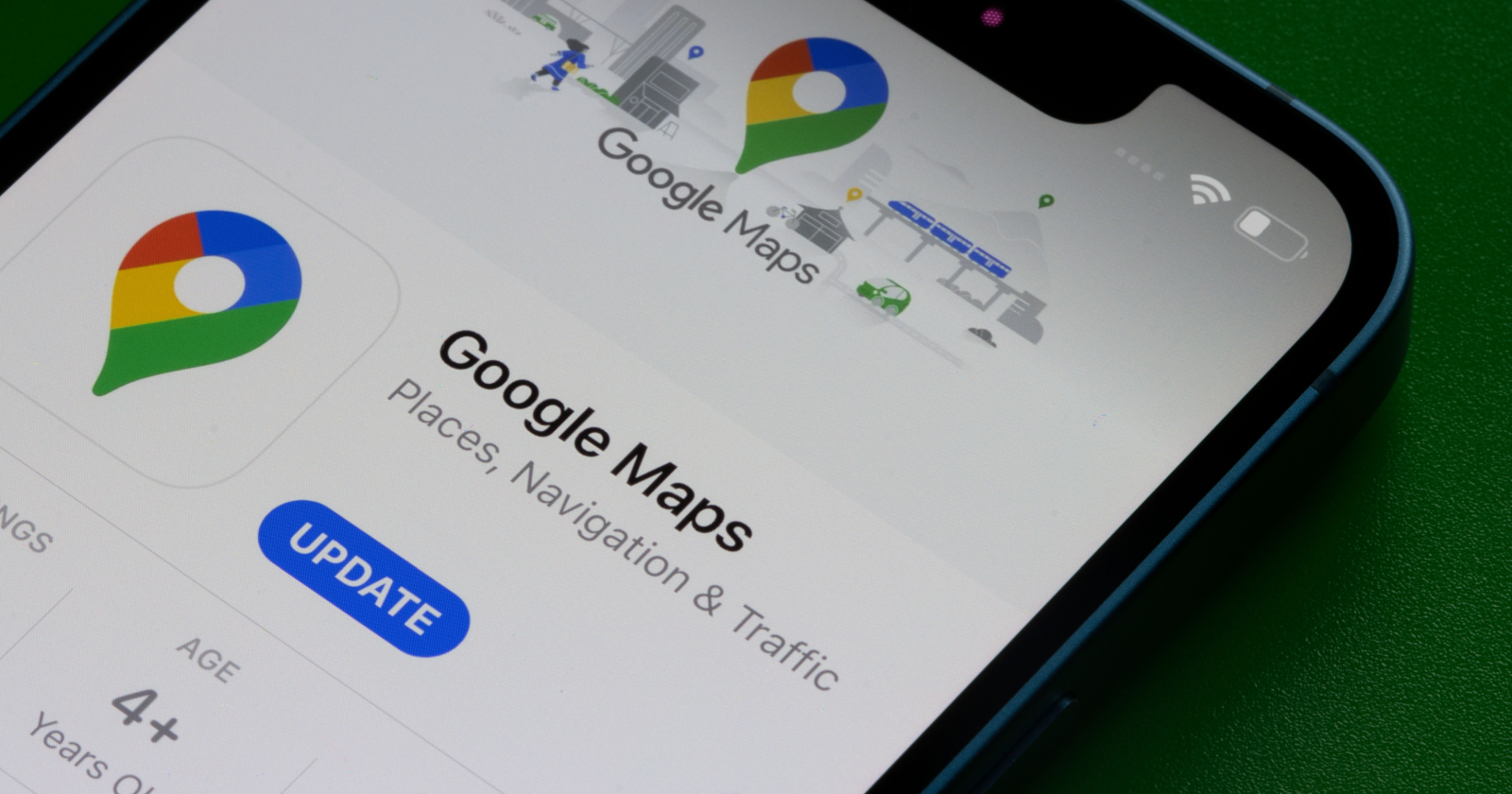This post was sponsored by DinoRANK. The opinions expressed in this article are those of Sponsor.
Google is a great source of qualified and returning traffic for your business – that’s a fact.
Many people say that the key to SEO success is establishing yourself as the authoritative source for all keywords in your industry, even niche ones.
unfortunately, Your competition is doing the same. In some cases, you may even be competing with yourself.
Everyone creates the same content to rank high on Google. So you have to differentiate yourself.
Your competition may be using the same niche keywords as you, but are they optimizing their domain’s SEO by cleaning up cannibalized content and keyword cannibalization?
You may not be; So this is a great way to get your website to the top of Google.
What is keyword cannibalization in SEO?
As you may know, sometimes two or more URLs on the same domain can rank for the same keyword or set of keywords.
In this case, Google doesn’t know what content to show on search engine results pages (SERPs).
If those URLs compete for the same search terms, this is called SEO cannibalization.
How cleaning up cannibalization can boost your rankings instantly
If you and your competition rank for the same keywords, but your position in the SERPs is lower, you may have a cannibalization problem.
When your content cannibalizes itself, you not only have to fight your competitors for a top spot—you also have to fight with your own sites.
There’s enough competition out there without having them at home, right?
Cannibalization is a damaging factor when URLs compete with each other. They can even harm your domain authority if there are too many of them, especially if They didn’t tell Google that there was a clear difference between two similar pieces of content.
As you can see, cannibalization has a negative impact on your domain’s SEO.
To solve the cannibalization problem, we must first know how to find them.
How to find cannibalization on your website
There are several ways to find cannibalization on your domain:
- The manual way
- The easy way
How to find cannibalized keywords by hand
There are two ways to find content and keyword cannibalization without using a tool:
- Use a rank tracker or Google Search Console to see where your pages are in search results and the keywords they rank for; Then find matching URLs for the same keywords.
- Check the content of your website manually to see if there are multiple pages addressing the same topic or containing the same keywords. Then go to Google and search for the keyword you suspect you’re cannibalizing and see if you’re really doing it or not; This can also help you prevent this from happening.
How to find keyword cannibalization in a single click
With DinoRANK, you can just click a button and instantly see all your cannibalized content.
All you have to do is create a project in the tool and sync it with your Google Analytics and Google Search Console accounts. DinoRANK does the rest.
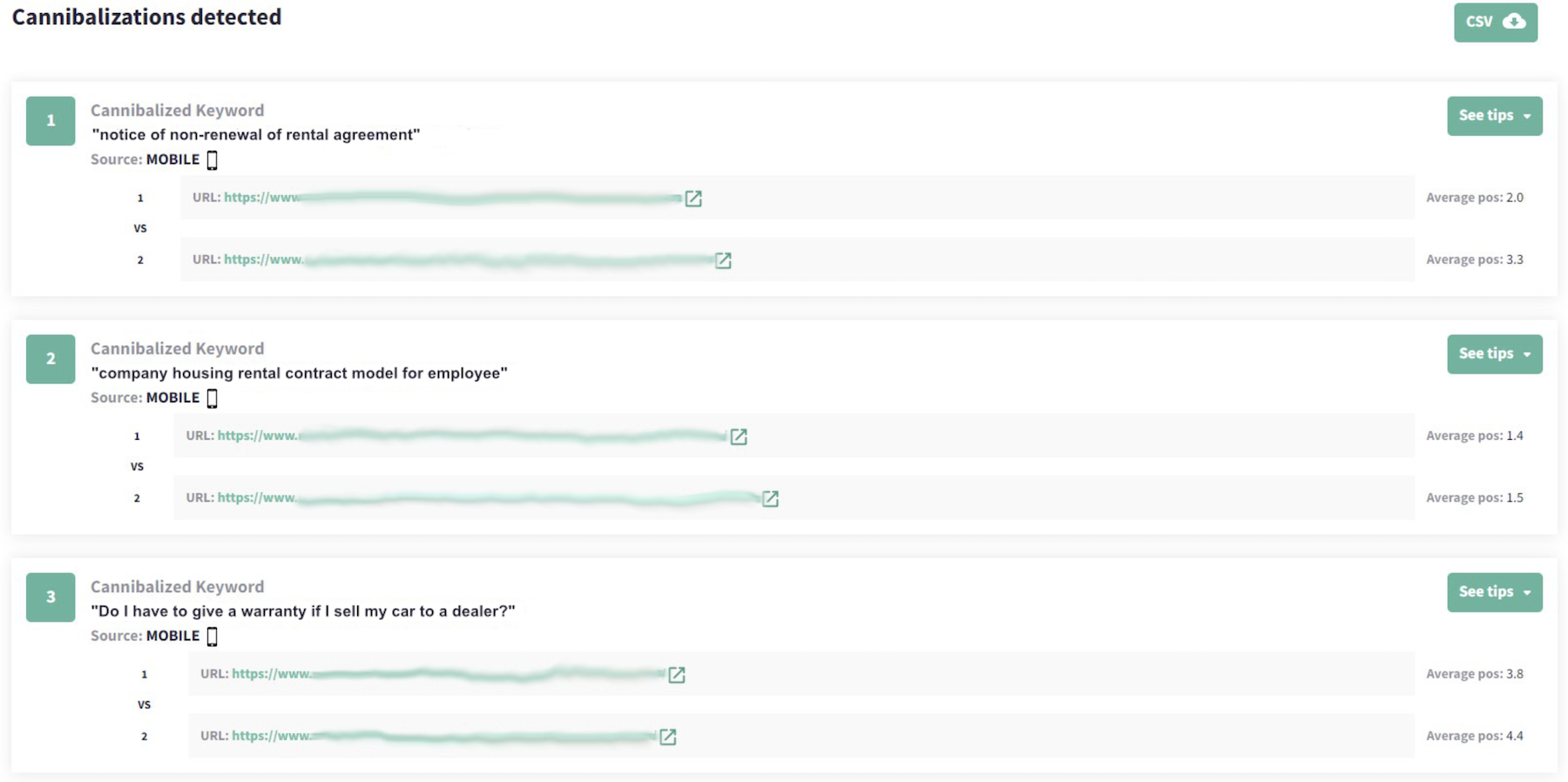 Screenshot from DinoRANK.com, January 2023
Screenshot from DinoRANK.com, January 2023Now see what content is cannibalized on your site →
What decision should you make after finding all the cannibalization affecting your site?
What is the best way to fix cannibalization?
Once you find the cannibalizations on your website, you can do this Follow these steps to resolve the issue:
- Join or merge two URLs into one.
- Do a 301 redirect.
- Shift focus to either piece of content and de-optimize or optimize for the word it cannibalizes.
- Place a canonical tag in one of the two URLs.
- Remove either content if you think it is thin content or duplicate content.
How do I choose the best method?
When confronted with cannibalization, what analysis should you perform to take the optimal action?
Suppose you have 2 URLs of the same domain positioned for the same keyword. 1 URL is at position 5 and the other URL is at position 7 in the SERPs.
In this case you should:
- Check the content both sides to see if they are addressing the same topic or contain the same keywords. If so, they are likely competing with each other and causing cannibalization.
- Check site authority of each page, as measured by the number of inbound links, the quality of the links, the site structure, etc. The page with the higher authority is likely to perform better in the search results.
- Check the traffic received from each page to see which one gets more visits and to analyze which URL responds better to the search intent of this or that keyword.
- Check the exchange rates each page to see which one is generating more sales or conversion actions.
Once the analysis is complete, you will have enough elements to identify what actions to take on each cannibalization.
Still not sure?
Do not worry. Depending on the case, DinoRANK will show you recommendations on how to proceed.
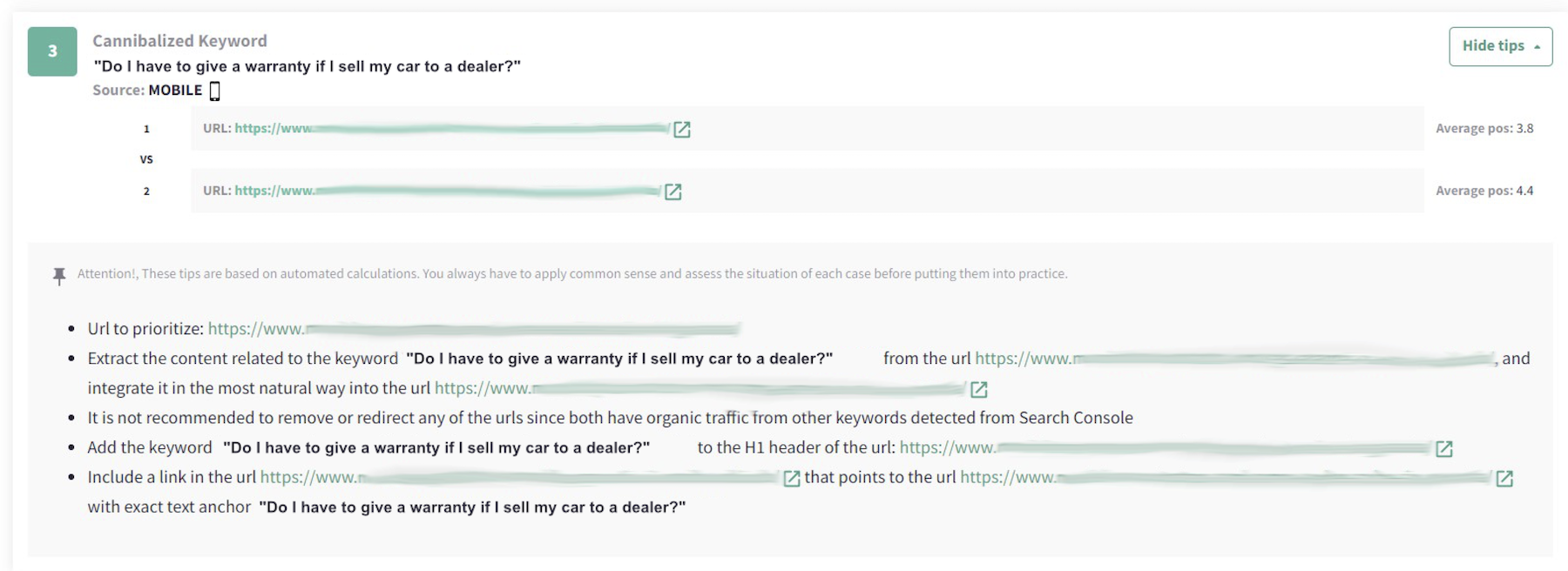 Screenshot from DinoRANK.com, January 2023
Screenshot from DinoRANK.com, January 2023Usually the content is consolidated into one of the two cannibalized URLs (the one with higher authority or higher traffic) and the discarded URL should become a 301 redirect.
The effect of this repair is usually positive in many cases.
However, if both pieces of content serve their purpose (e.g. one URL belongs to the product card and the other to a blog post), a better option would be to optimize or de-optimize the content accordingly, or opt for implementing a canonical tag to decide one of the urls to show search engines which is the main page.
In any case, it is important to continuously monitor the performance of the pages and make adjustments where necessary to avoid cannibalization in the future; with DinoRANK you have this under control.
How to optimize or de-optimize cannibalizing content
Search engines use algorithms to determine the relevance of a webpage for a specific search query, and one way to do this is to identify the keywords that appear most frequently on one page compared to the keywords that appear similarly on others pages appear.
Before optimizing or de-optimizing either piece of content, it’s important to know all the keywords for each URL to be cannibalized.
Then you have to analyze their semantic content with the TF*IDF analysis.
So if you are parsing a URL whose content you want to optimize/promote for a specific keyword, you can do that with TF*IDF Understand which keywords are relevant to that content.
-
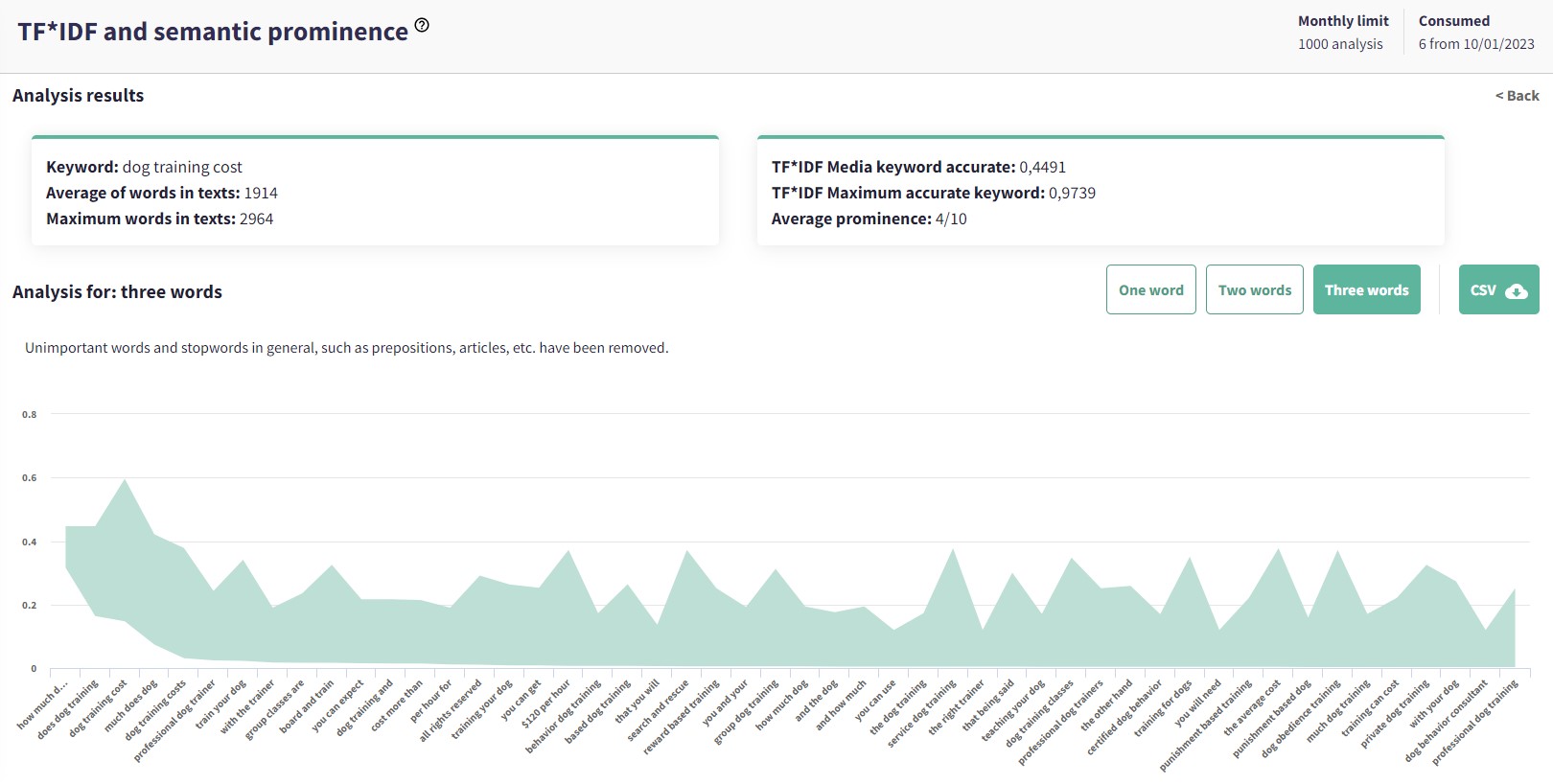 Screenshot from DinoRANK.com, January 2023
Screenshot from DinoRANK.com, January 2023
Expanding and semantically optimizing content that already ranks highly, whether cannibalizing or not, is one of the best ways to give more relevance to the terms that have only received impressions or a few clicks. This is because you are now adding greater semantic richness to that content.
With DinoRANK you can apply TF*IDF analysis to already published URLs to see how they can be optimized.
You can also use this feature if you want to create new content based on a keyword or group of keywords that you want to rank for.
-
 Screenshot from DinoRANK.com, January 2023
Screenshot from DinoRANK.com, January 2023
DinoRANK arranges the information visually, dividing the graph into three levels of filtering: one keyword, two keywords, and three keywords.
-
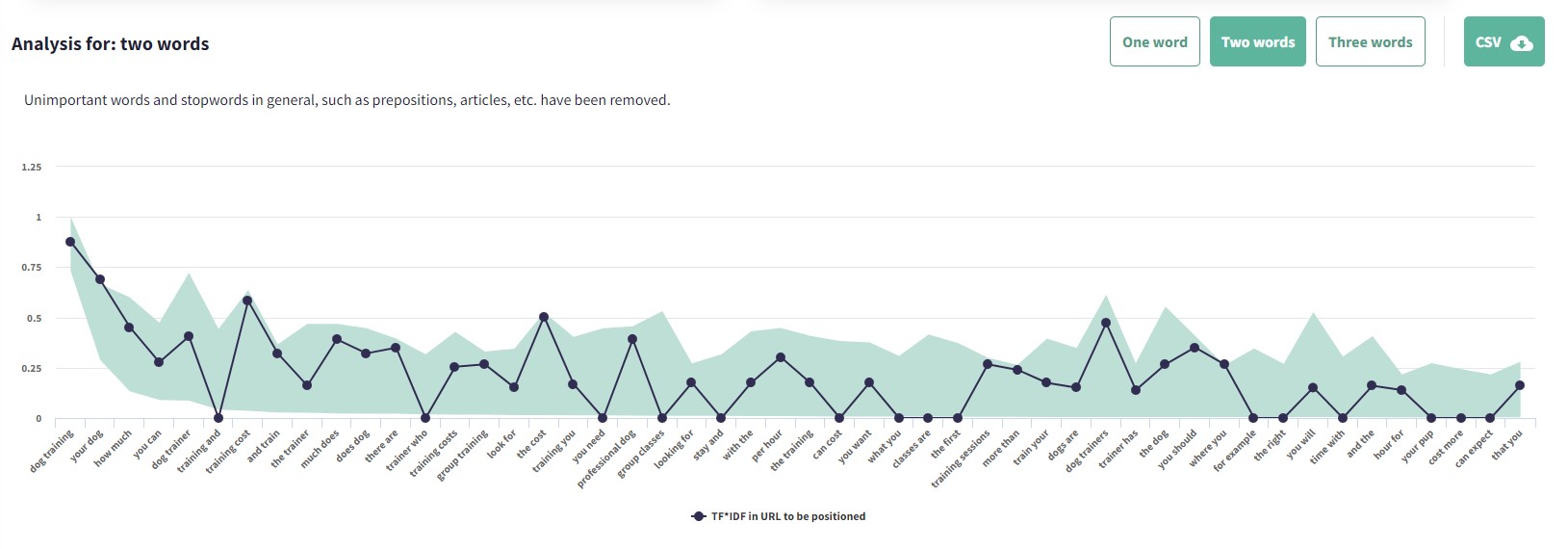 Screenshot from DinoRANK.com, January 2023
Screenshot from DinoRANK.com, January 2023
In addition to the recommendations, you can also Quickly see the header structure used by your closest competitors in Google’s top 10.
In no time, you’ll discover opportunities and content ideas with an optimal headline structure, including the associated semantic keywords needed for ranking.
Additionally, if this semantic content extension is supplemented with some internal links to this optimized URL, and you do this with primary keyword anchor text or exact semantic keywords, you strengthen the desired authority and typicality of this URL.
With internal links you derive a larger semantic context and strengthen the authority of the already optimized page thanks to the semantic prominence analysis TF*IDF.
If you want to use these features to edit the SEO of your projects in a simple but effective way, you can try DinoRANK.
All the SEO your website needs can be found in DinoRANK.

